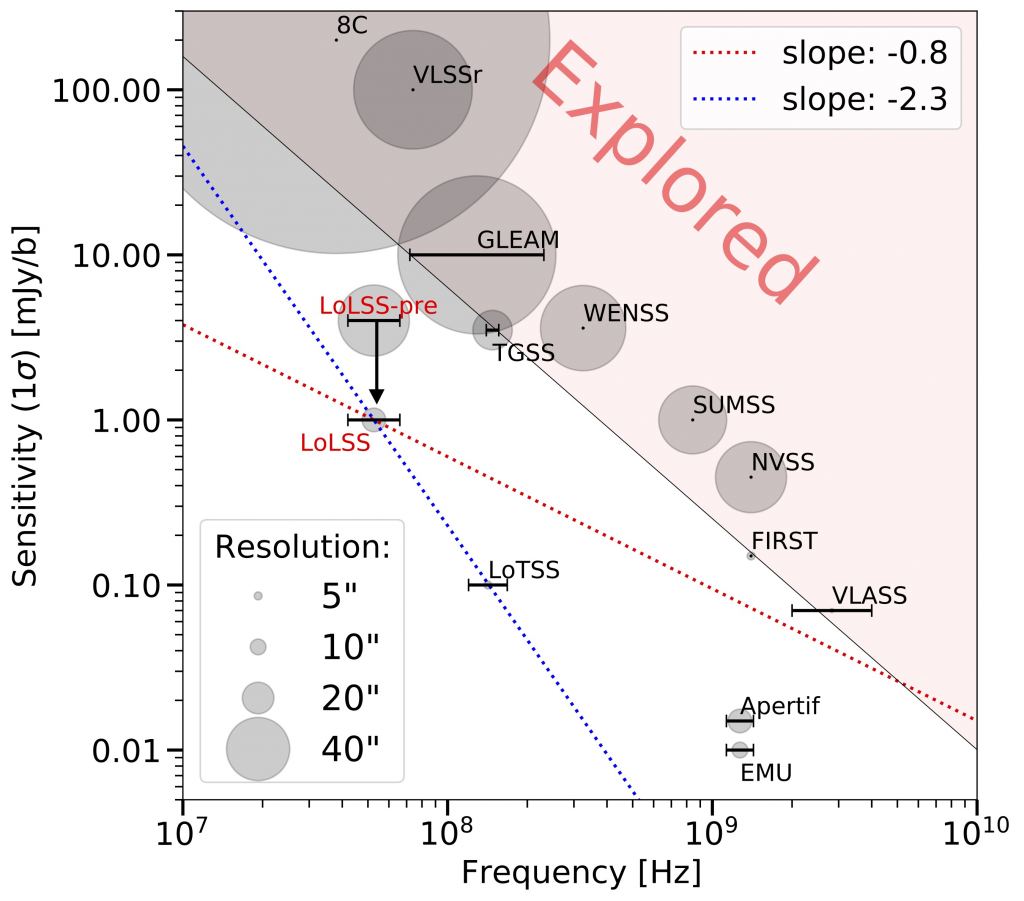A map of 25,000 Supermassive Black Holes Across the Universe
By Brian Koberlein
The Low-Frequency Array (LOFAR) is a different kind of radio telescope. Although radio light has the longest wavelengths and lowest frequencies of the electromagnetic spectrum, much of radio astronomy has focused on the higher frequency end. Observatories such as ALMA study radio light at frequencies of hundreds of Gigahertz, and the VLA studies the fifty Gigahertz range, LOFAR captures radio signals below 250 Megahertz, which is in the range of the lowest radio frequencies that can be seen from Earth.

Low-frequency radio astronomy is challenging because astronomical radio sources are very faint. Low-frequency light also has a longer wavelength, which means that it is hard to capture radio images with good resolution. To overcome these challenges, LOFAR uses an array of omnidirectional antennas. It has about 20,000 antennas clustered at 52 stations across Europe. Together they create a virtual telescope more than 1,000 kilometers across. With such a large number of antennas, processing the data is extremely complex. Other radio telescopes also combine multiple signals from an antenna array, but LOFAR operates at such low frequencies that Earth’s ionosphere can distort the signals. It’s similar to the way visible light can be distorted when viewed through ripples of water. So powerful new software had to be developed to convert the radio data into images of the sky.
Recently, LOFAR released the first data on its Long Baseline Array Sky Survey. They have only mapped 4% of the northern sky so far, but have already mapped 25,000 supermassive black holes. While the universe is filled with radio sources, most low-frequency radio light comes from concentrated sources such as black holes at the hearts of galaxies. LOFAR has a high enough resolution that the black hole map looks like a starry night, with each black hole as an isolated radio dot, as you can see in the image above.
It will take several more years for the team to make a full map of the northern sky. When completed, the sky survey could help us learn not only about black holes but also about the large-scale structure of the cosmos.
Reference: de Gasperin, F., et al. “The LOFAR LBA Sky Survey I. survey description and preliminary data release.” arXiv preprint arXiv:2102.09238 (2021).
The post A map of 25,000 Supermassive Black Holes Across the Universe appeared first on Universe Today.

February 24, 2021 at 02:25AM
via Universe Today read more...

Post a Comment